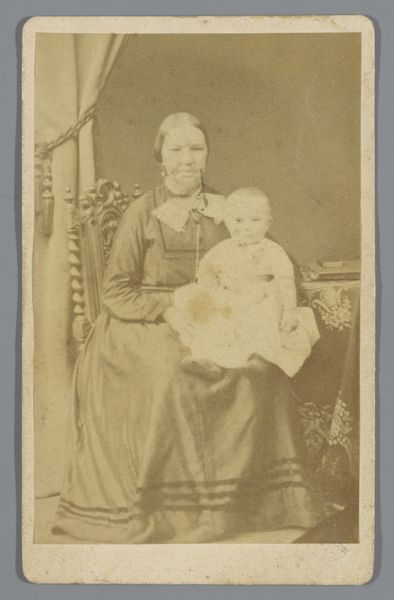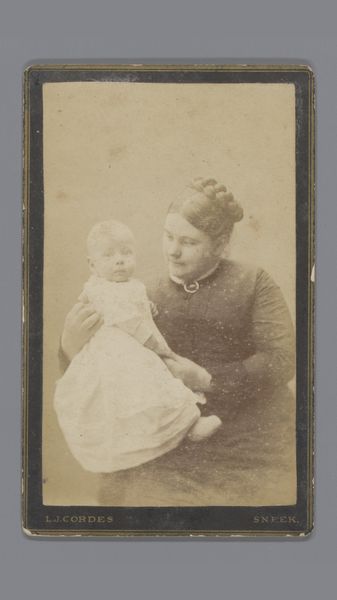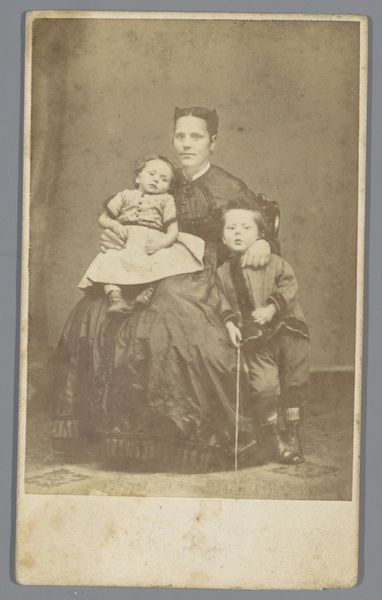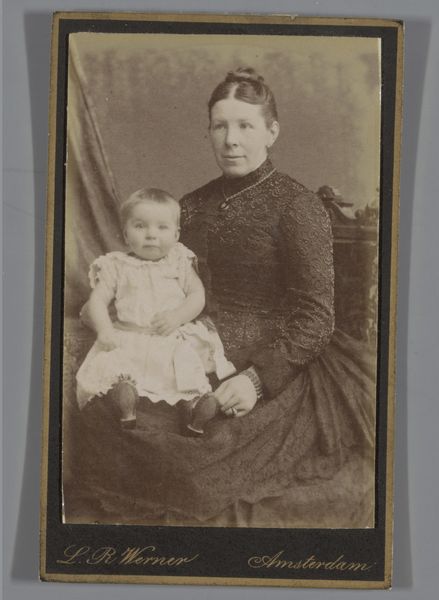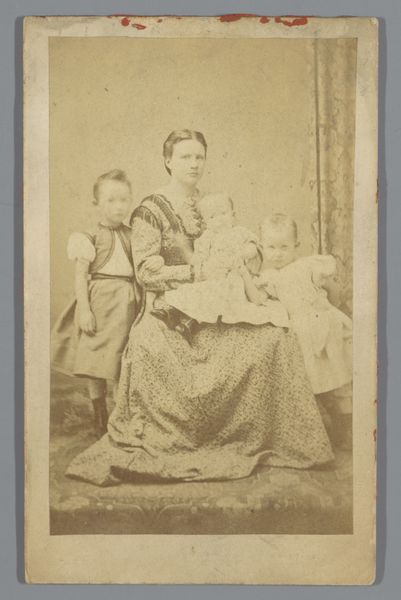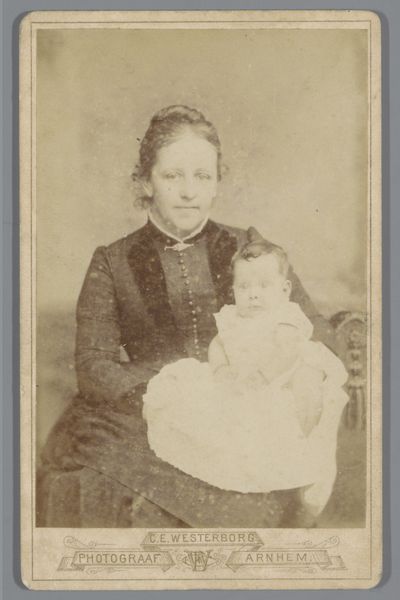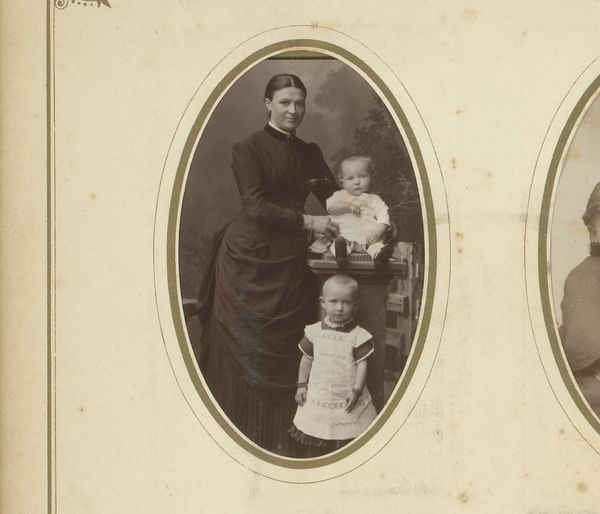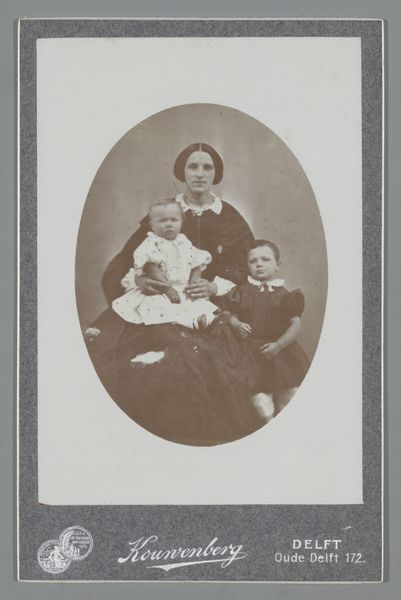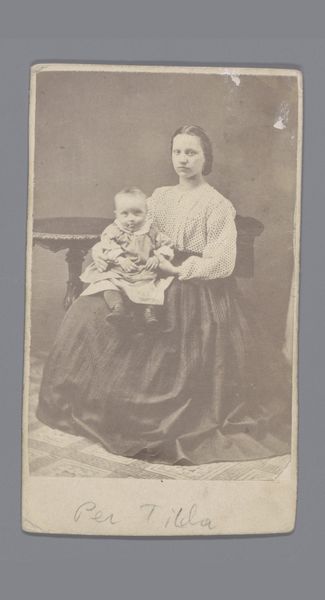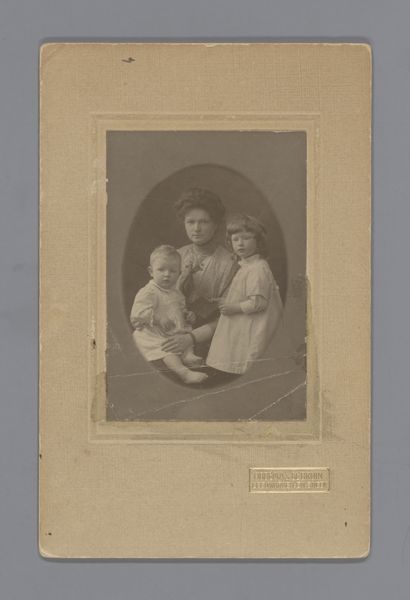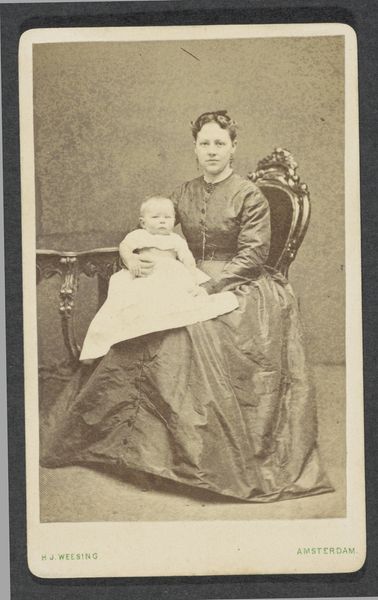
photography
#
portrait
#
mother
#
photography
#
coloured pencil
#
group-portraits
#
genre-painting
Dimensions: height 104 mm, width 63 mm
Copyright: Rijks Museum: Open Domain
Curator: There’s such a quiet dignity to this image. It’s entitled “Portrait of an Unknown Woman with Two Babies,” attributed to P. Siewers & Zoon, and estimated to have been created between 1877 and 1886, through photography and perhaps coloured pencil techniques. Editor: It’s a haunting tableau. The somber tone really pulls you in. The composition is rigidly symmetrical, yet there is a feeling of profound weariness emanating from this mother. Curator: What fascinates me are the material and processes at play. We’re talking about photography at a time when it was still relatively novel. Consider the labor involved in posing subjects for extended periods, the preparation of the photographic plates. The texture and light manipulation using pencil to refine this image. Editor: Absolutely. We also need to recognize this work's socio-political dimensions. The image likely captures a working-class mother and children; the limited resources available at the time inform this stoic expression. Motherhood, particularly for working women, was physically and emotionally exhausting. Her anonymity further amplifies a larger social commentary. Curator: Precisely! Think about the societal function of portraiture. It moved beyond the elites into middle class in the 19th century, often commissioned for specific events: marriage, mourning and sometimes… simply celebrating family as labour. Here, in this photograph, we have a unique merging. Is this her 'best dress' so she can be seen at her most polished, even dignified? Or a work apron, barely concealed. Editor: Also, this isn’t just about visibility, but who controls representation. An artistic collective ‘P. Siewers & Zoon' documented people from an interesting point of view that goes against more famous portraits that focus on 'royalty'. These studio workers likely wielded considerable power in framing societal narratives about motherhood, about identity and family. Consider this form of agency as these narratives solidify. The babies, too – their dress, one in stripy socks, suggests class differences perhaps in accessing materials. Curator: It's a beautiful intersection of art and utility, and a sharp reminder of our continuous, material consumption of photography itself. So mass-produced, and yet such individual care. Editor: This photo encourages us to consider the power of the medium, the social conditions in which it was made and received, the human cost, the societal value of representing marginalized people with dignity. Curator: Thank you. I hadn't quite viewed it through such lens before. This deep dive highlights not only the materiality, and historical conditions but broadens and opens new doors for interpretation of this beautiful image. Editor: Thank you for guiding us back to consider materiality within a societal context of creation!
Comments
No comments
Be the first to comment and join the conversation on the ultimate creative platform.
